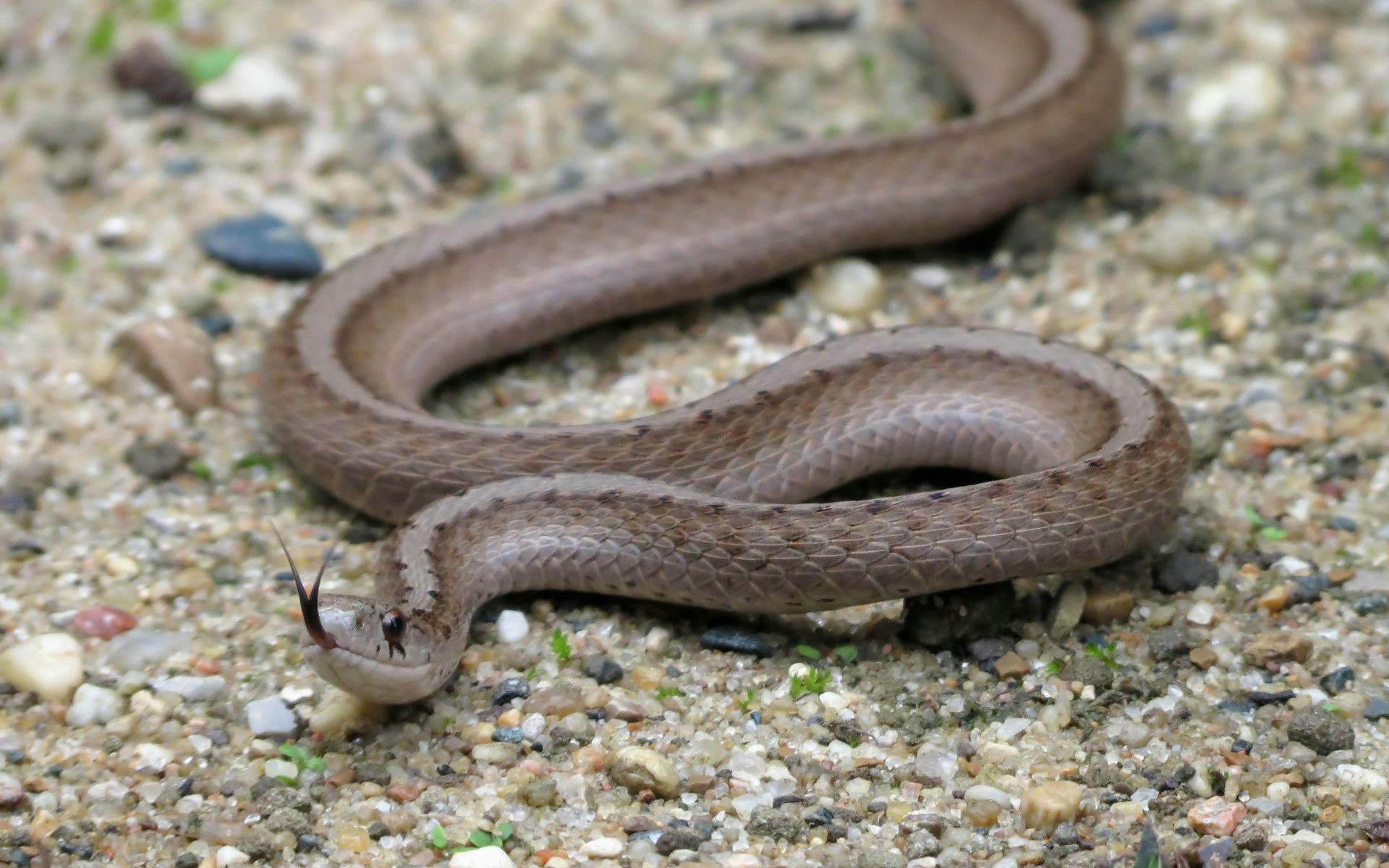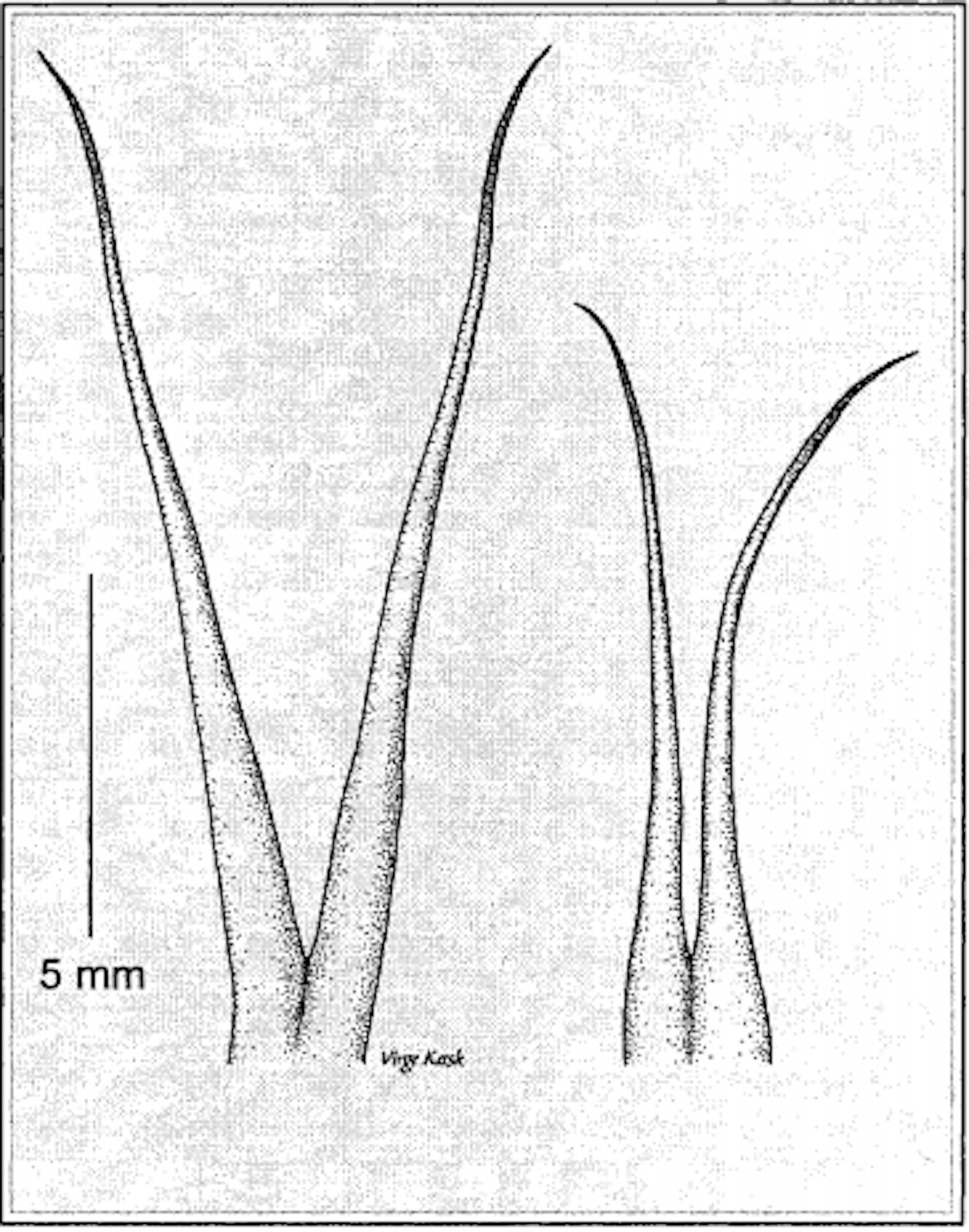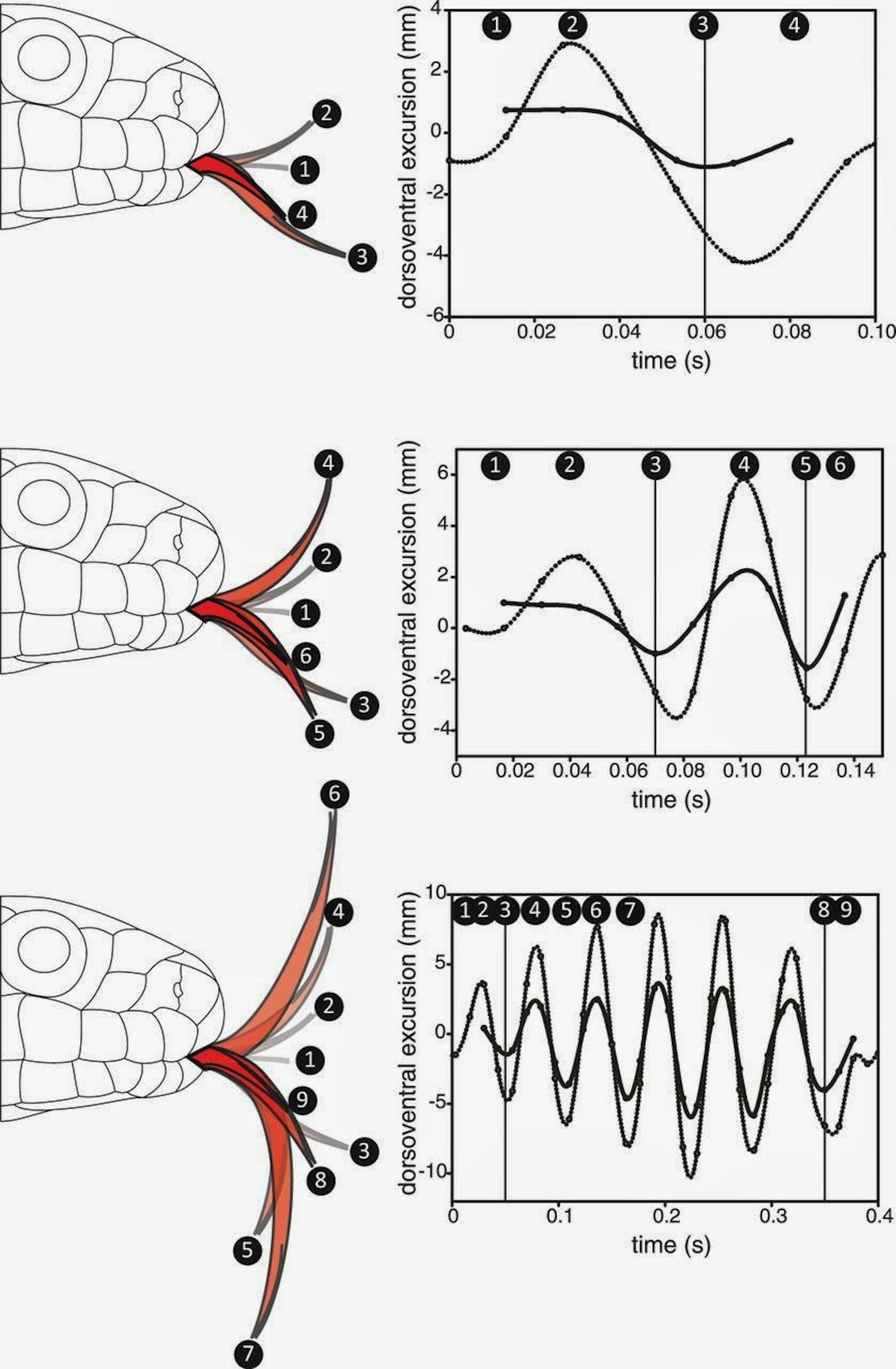Do you find yourself pondering, Why Do Snakes Flick Their Tongues? At WHY.EDU.VN, we unravel this intriguing behavior, explaining how snakes use their tongues for much more than just tasting. Discover the fascinating science behind this action, from chemical collection to spatial awareness. We offer accessible answers, bridging curiosity with reliable insights, making complex topics understandable.
1. The Evolutionary Mystery of the Forked Tongue
The forked tongue of a snake has captivated observers for centuries, sparking numerous theories about its purpose. From ancient philosophical musings to modern scientific investigations, the quest to understand this peculiar appendage has been a long and winding road.
1.1. Historical Perspectives on Snake Tongues
Early explanations for the snake’s forked tongue ranged from fanciful to practical.
- Aristotle’s Gustatory Theory: The renowned philosopher Aristotle proposed that the forked tongue provided snakes with a “twofold pleasure from savours,” essentially suggesting that it doubled their sense of taste. He believed that this unique tongue structure enhanced their gustatory experience.
- Hodierna’s Hygiene Hypothesis: Italian astronomer Giovanni Hodierna, on the other hand, theorized that snakes used their tongues to clean dirt from their noses. He reasoned that because snakes often dwell in soil and caves, their nostrils would frequently become clogged with debris, necessitating a specialized tool for cleaning.
- Seventeenth-Century Foraging Claims: Some writers in the 17th century claimed to have observed snakes using their forked tongues to catch flies and other small animals, employing them as forceps. These accounts suggested that the tongue served as a prehensile tool for capturing prey.
- The Sting Myth: Even today, a common misconception persists that snakes can sting with their tongues. This myth likely stems from the rapid and darting movements of the tongue, which can be perceived as threatening.
1.2. Debunking the Myths and Misconceptions
While these historical explanations and persistent myths are intriguing, modern science has largely debunked them. Snakes do not use their tongues for tasting, cleaning, catching prey, or stinging. Instead, the primary function of the snake’s tongue is far more sophisticated: chemoreception.
1.3. Kurt Schwenk’s Groundbreaking Research
Evolutionary biologist Kurt Schwenk, from the University of Connecticut, has dedicated over two decades to unraveling the mystery of the snake’s tongue. His research has demonstrated that the most accurate description of what snakes do with their tongues is “smelling.” This involves collecting and interpreting chemical cues from the environment, allowing snakes to navigate their surroundings and locate prey or mates.
2. The Science of Snake “Smelling”
Snakes utilize their tongues to gather chemicals from the air and ground, but the tongue itself lacks taste or smell receptors. The chemosensory process involves a specialized organ known as the vomeronasal organ, or Jacobson’s organ, located in the roof of the mouth.
2.1. The Jacobson’s Organ: The Snake’s Chemical Analysis Lab
The Jacobson’s organ is a paired structure, mirroring the forked tips of the snake’s tongue. This organ contains sensory cells that are highly sensitive to specific chemicals. When the tongue retrieves molecules and delivers them to the Jacobson’s organ, these chemicals trigger electrical signals that are then transmitted to the brain for interpretation.
2.2. The Tongue’s Delivery System
Contrary to earlier beliefs, the snake’s tongue does not directly insert chemicals into the Jacobson’s organ. Instead, X-ray studies have revealed that the tongue deposits the collected molecules onto specialized pads located on the floor of the mouth. When the snake closes its mouth, these pads press against the roof of the mouth, facilitating the transfer of the chemical samples to the entrance of the Jacobson’s organ.
2.3. Evolutionary Parallels in Lizards
The mechanism of chemical delivery in snakes is further supported by observations of other reptiles, such as geckos and skinks. These lizards lack the deeply forked tongues of snakes but still possess vomeronasal organs. They utilize similar pads in their mouths to transfer chemical cues, suggesting a shared evolutionary strategy for chemoreception.
3. Three-Dimensional “Smelling”: The Advantage of a Forked Tongue
The forked structure of the snake’s tongue provides a distinct advantage in chemoreception: the ability to “smell” in three dimensions. This spatial awareness is crucial for snakes to navigate their environment, track prey, and locate potential mates.
3.1. Detecting Chemical Gradients
When a snake extends its tongue, the forked tips can span a distance twice the width of its head. This allows the snake to collect chemical information from two distinct points simultaneously. By comparing the chemical concentrations at each tip, the snake can detect gradients, providing a sense of direction.
3.2. Analogies to Owl Hearing
The three-dimensional “smelling” of snakes is analogous to how owls use their asymmetrical ears to detect sound in three dimensions. Owls can determine the direction of a sound source by comparing the time it takes for the sound to reach each ear. Similarly, snakes use their forked tongues to compare the chemical signals received at each tip, allowing them to pinpoint the source of an odor.
3.3. Neural Circuitry Similarities
Snakes and owls share similar neural circuitry for processing sensory information and determining direction. This circuitry compares the signal strength received from each side of the body, enabling the animal to discern the direction from which a smell or sound originates. Humans also utilize similar mechanisms for hearing, although our ability to detect spatial information is not as refined as in snakes and owls.
4. Trail Following and Mate Location
The ability to “smell” in three dimensions enables snakes to follow scent trails left by prey or potential mates. This is particularly important for snakes that rely on chemical cues for hunting and reproduction.
4.1. Kahmann’s Experimental Evidence
In the 1930s, biologist Herman Kahmann conducted experiments in which he surgically removed the forked tips of snakes’ tongues. He observed that while these snakes could still detect odors, they lost their ability to follow scent trails effectively. This experiment provided early evidence for the importance of the forked tongue in spatial chemoreception.
4.2. Ford’s Garter Snake Observations
In the 1980s, snake biologist Neil Ford studied the tongue-flicking behavior of male garter snakes as they followed pheromone trails left by females. He found that when both tips of the male’s tongue remained within the scent trail, the snake continued moving straight ahead. However, when one tip strayed outside the trail, the snake would turn its head away from that tip and back towards the pheromone trail, adjusting its course to stay on track.
4.3. A Simple Rule for Accurate Trail Following
Ford’s research suggested that snakes follow a simple rule when tracking scent trails: if both tongue tips are within the trail, continue straight; if one tip is outside the trail, turn away from that tip. This strategy enables snakes to follow trails accurately and efficiently.
5. Sexual Dimorphism and Tongue Morphology
In some snake species, there is evidence of sexual dimorphism in tongue morphology. This means that the tongues of males and females differ in size or shape, potentially reflecting differences in their chemosensory needs.
5.1. Smith’s Copperhead Study
Snake ecologist Chuck Smith discovered that male copperheads have longer, more deeply forked tongues than females. He proposed that this enhanced tongue morphology improves the males’ ability to locate mates by detecting pheromones.
5.2. Implications for Mate Finding
The differences in tongue morphology between male and female copperheads suggest that males may rely more heavily on chemoreception for mate finding than females. This could be due to the males’ need to locate receptive females over a larger area.
5.3. Broader Occurrence of Sexual Dimorphism
Although sexual dimorphism is relatively rare in snakes, it is likely that differences in tongue size and shape are present in other species as well. These variations could reflect differences in foraging strategies, habitat use, or mate-finding behavior.
6. Airborne Chemical Sampling
In addition to using their tongues to sample chemicals from the ground, snakes can also use them to collect airborne chemicals. This is particularly important for detecting distant prey or mates.
6.1. Tongue-Flicking Behavior
Snakes often wave their tongues in the air without touching them to any surface. This behavior, known as tongue-flicking, allows them to sample airborne chemicals from a larger area.
6.2. Air Vortex Creation
When a snake flicks its tongue, it creates air vortices, similar to those formed in the water behind a boat. These vortices do not dissipate quickly but instead remain in the vicinity of the tongue.
6.3. Ryerson’s Vortex Sampling Discovery
Bill Ryerson, a student in the Schwenk lab, discovered that the vortices created by snake tongues have a unique property: they do not drift away but remain close to the tongue, allowing the snake to repeatedly sample the air within the vortex. This greatly enhances the snake’s ability to detect airborne chemicals.
7. Oscillating Tongue-Flicks
Snakes utilize a specialized type of tongue-flick called an oscillating tongue-flick, which is unique to snakes and greatly enhances their ability to sample airborne chemicals.
7.1. Enhanced Air Sampling
Oscillating tongue-flicks allow snakes to sample up to 100 times more air compared to simply extending the tongue downward. This is because the oscillating movement creates a continuous stream of air vortices that pass over the tongue’s surface.
7.2. Chemical Transfer to Jacobson’s Organ
After the tongue samples airborne chemicals, it transfers these molecules to the Jacobson’s organ via the pads on the floor of the mouth. This process is similar to how snakes transfer chemicals collected from the ground.
7.3. Use in Mate Location
Evidence suggests that male copperheads can use oscillating tongue-flicks to detect airborne pheromones released by females. This allows them to locate potential mates from a distance, even when they are not directly following a scent trail on the ground.
8. Why Do Snakes Flick Their Tongues? A Summary Table
| Function | Description |
|---|---|
| Chemical Collection | Gathers chemicals from air and ground. |
| Jacobson’s Organ | Transfers chemicals to the Jacobson’s organ for processing. |
| 3D “Smelling” | Detects chemical gradients using forked tongue. |
| Trail Following | Uses scent trails to track prey or mates. |
| Airborne Sampling | Samples airborne chemicals with tongue-flicking. |
| Oscillating Flicking | Creates air vortices for enhanced chemical sampling. |
| Mate Location | Detects pheromones to find potential mates. |



9. Unanswered Questions and Future Research
While significant progress has been made in understanding the function of the snake’s tongue, many questions remain unanswered. Future research will likely focus on:
- The specific mechanisms by which snakes determine direction using dispersed and transient airborne odors.
- The role of the Jacobson’s organ in processing complex chemical mixtures.
- The evolutionary origins of the forked tongue and its relationship to chemoreception.
- The diversity of tongue morphology and behavior across different snake species.
10. Snake Tongue FAQs
| Question | Answer |
|---|---|
| Why do snakes flick their tongues? | To collect chemicals from their environment and detect scents. |
| Do snakes taste with their tongues? | No, taste receptors are not on the tongue. They have receptors in the Jacobson’s Organ. |
| What is the Jacobson’s organ? | An organ in the roof of a snake’s mouth that detects chemicals brought in by the tongue. |
| How does the forked tongue help snakes? | It enables snakes to smell in 3D, detecting chemical gradients to find prey or mates. |
| Can snakes sting with their tongues? | No, that is a myth. Snakes use fangs to inject venom, not their tongues. |
| Do all snakes have forked tongues? | Yes, most snakes have forked tongues, though the degree of forking can vary. |
| How often do snakes flick their tongues? | It varies depending on the situation and environment, but they can flick them rapidly and frequently. |
| Is tongue-flicking related to aggression? | No, it’s primarily a sensory behavior for detecting chemicals and understanding their surroundings. |
| Do baby snakes flick their tongues? | Yes, baby snakes use their tongues to sense their environment from birth. |
| What kind of information do snakes gather by flicking their tongues? | They gather information about prey, predators, potential mates, and the surrounding environment. |
Conclusion
The snake’s forked tongue is a remarkable adaptation that enables these creatures to “smell” their world in three dimensions. From detecting chemical gradients to following scent trails and sampling airborne odors, the snake’s tongue plays a crucial role in its survival and reproduction. At WHY.EDU.VN, we are committed to providing clear, accurate, and engaging explanations of complex scientific topics. We hope this exploration of the snake’s tongue has sparked your curiosity and deepened your understanding of the natural world.
Still have questions? Don’t hesitate to visit why.edu.vn at 101 Curiosity Lane, Answer Town, CA 90210, United States, or reach out via Whatsapp at +1 (213) 555-0101. Our experts are ready to provide the answers you seek.